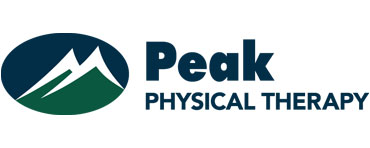By Hannah Jefferson, PT, DPT
If you are human, you likely have had a muscle cramp or “Charley horse” at one time in your life. Patients are often concerned about muscle cramps and why they occur.
I’ve often described muscle cramps as overuse, or just exercising a specific muscle too much. There actually is a little more to it. When surrounding and associated muscles are weak, other muscles have to make up for that weakness and are helping these weaker muscles too much. This is what causes the cramp.
The definition of muscle cramp is a “sudden and involuntary contraction of one or more of your muscles. Can be painful and make it temporarily impossible to use the affected muscle.”
Muscle cramps are rarely serious and will typically disappear on their own.
The cause of muscle cramps is unknown and theories remain anecdotal and observed instead of sound experimental evidence. Muscle cramps often occur in single, multi-joint muscles (calf, quadriceps, hamstrings) when they contract in an already shortened state.
COMMONLY DISCUSSED CAUSES FOR MUSCLE CRAMPING:
- Muscle overuse/overload
- Extreme fatigue
- Dehydration
- Muscle strain
- Electrolyte imbalance
- Neuromuscular causes
- Exercise in hot/humid environments
- Large sweat losses
TREATMENT AND PREVENTION OF MUSCLE CRAMPS
Most of the treatments and preventions listed in the table below are anecdotal and have only been observed to sometimes help decrease muscle cramps. Only the shaded cells have been studied and found to be effective. You should talk to your doctor before making any extreme dietary changes.
TREATMENT |
PREVENTION |
| Moderate static stretching of affected muscle | Proper fluid intake |
| Fluid replacement by mouth | Electrolyte balance |
| Occasionally, intravenous fluid replacement | Neuromuscular retraining |
| Ice/heat | Decreasing exercise intensity |
| Body position | Body position |
| TENS (Transcutaneous Electrical Nerve Stimulation) | Night ankle dorsiflexion splints |
| Massage | 1.8 L per hour of fluids |
| Compression garments | 1 L of water/fluids 1 hour before competition |
| Physical exercise | Balanced diet |
| Weight loss | Plyometric exercise |
Completely anecdotal treatments:
|
WHEN TO SEE A DOCTOR:
- Cause severe discomfort
- Are associated with leg swelling, redness or skin changes
- Are associated with muscle weakness
- Happen frequently
- Don’t improve
- Aren’t associated with obvious cause, such as strenuous exercise
COULD BE RELATED TO A MEDICAL CONDITION:
- Inadequate blood supply (normally go away after you stop exercising.)
- Nerve compression
- Mineral depletion (not enough potassium, calcium, magnesium
References:
Behringer, M., Moser, M., McCourt, M., Montag, J., Mester, J. “A promising approach to effectively reduce cramp susceptibility in human muscles: a randomized, controlled clinical trial.” PLoS One. 2014; 9(4): e94910.
Miller, K.C., Stone, M.S., Huxel ,K.C., Edwards, J.E. “Exercise-associated muscle cramps: causes, treatment, and prevention. Sports Health. 2010; 2(4): 279-283.
